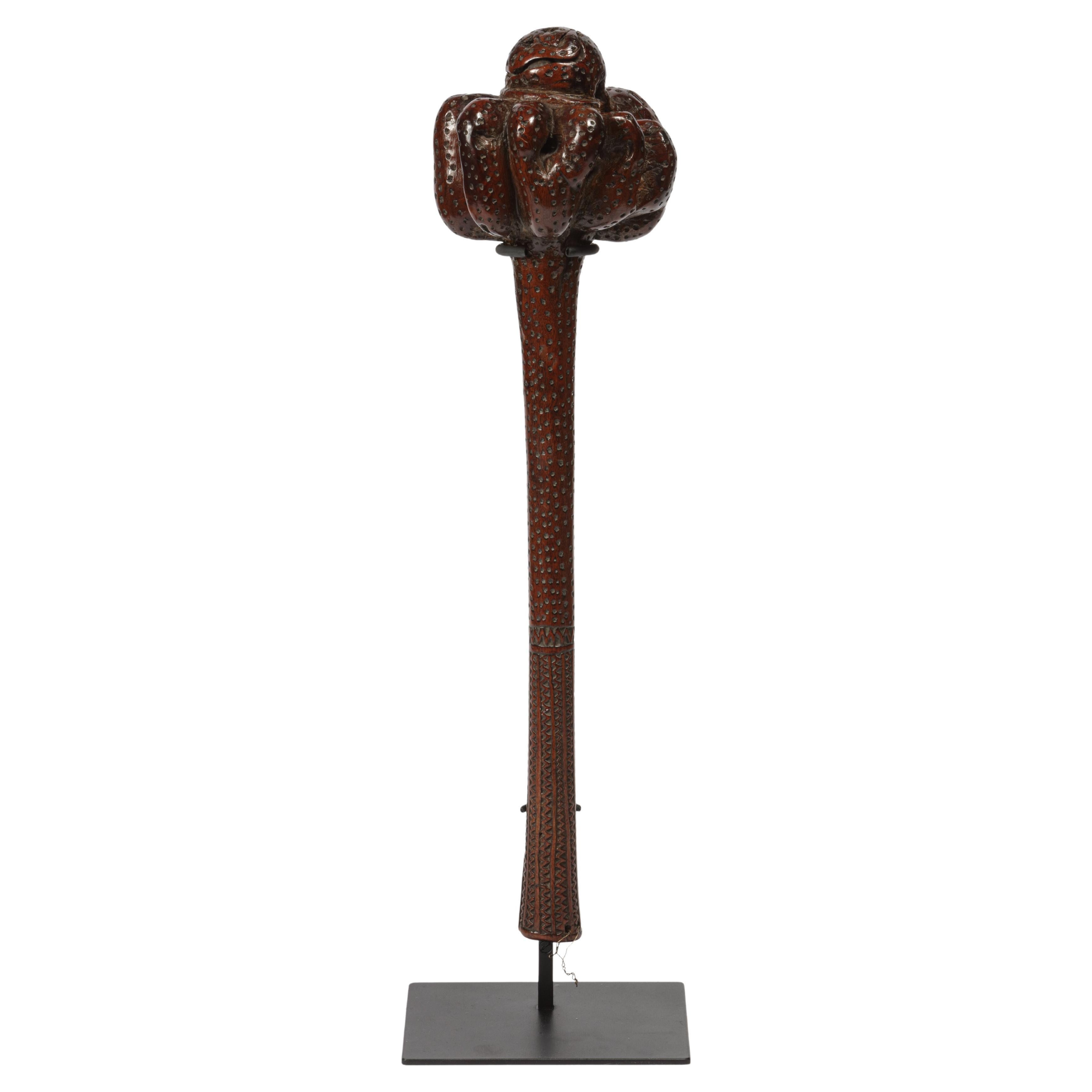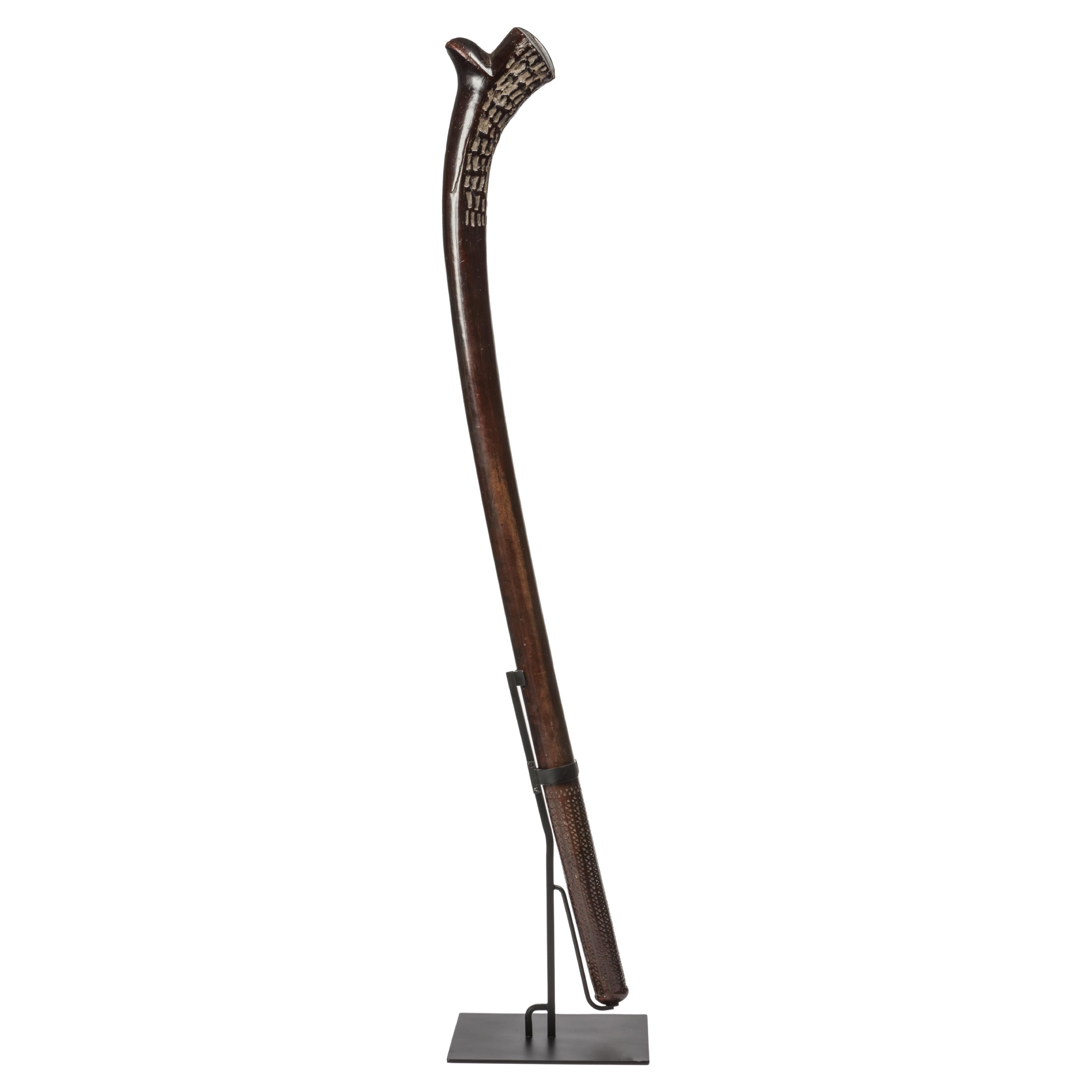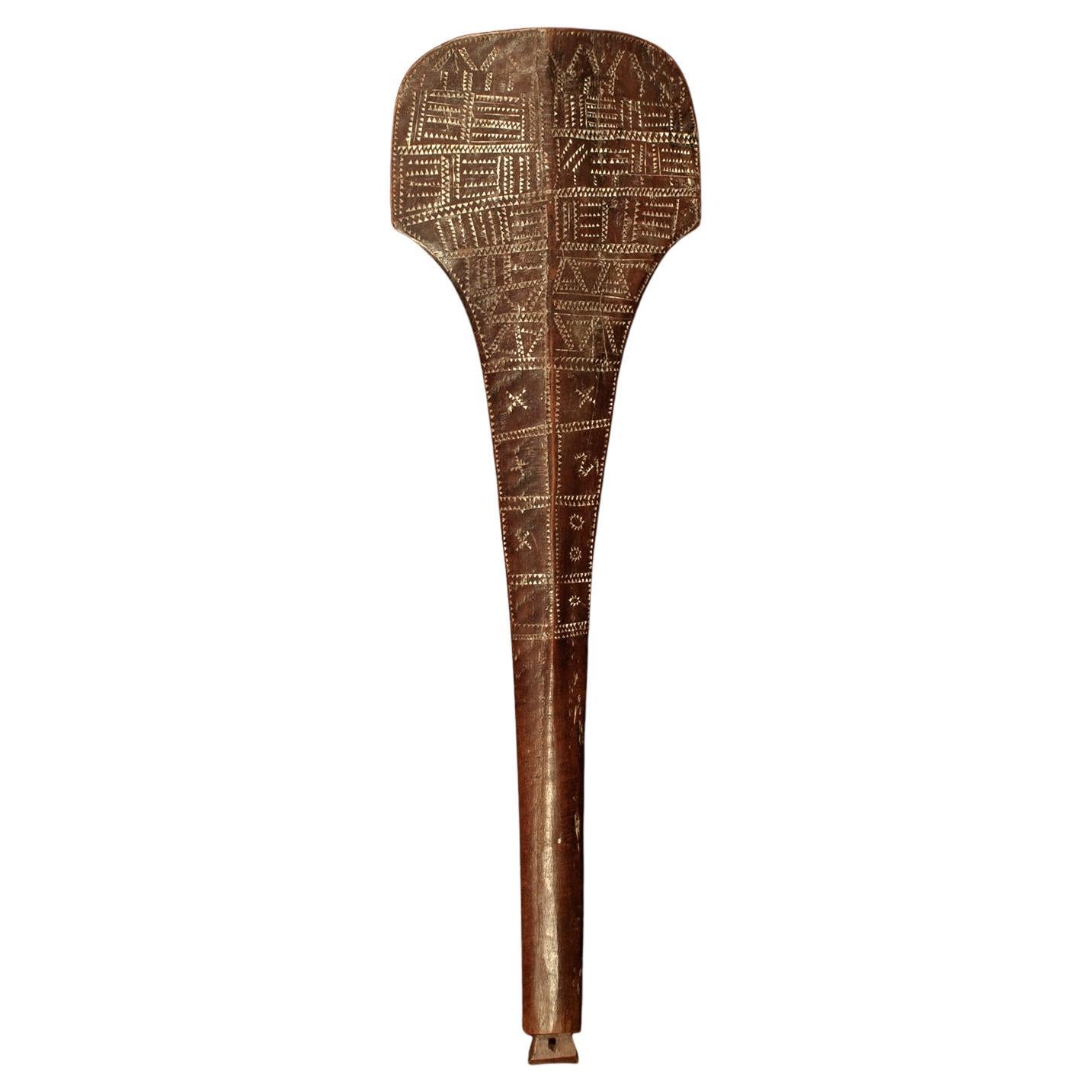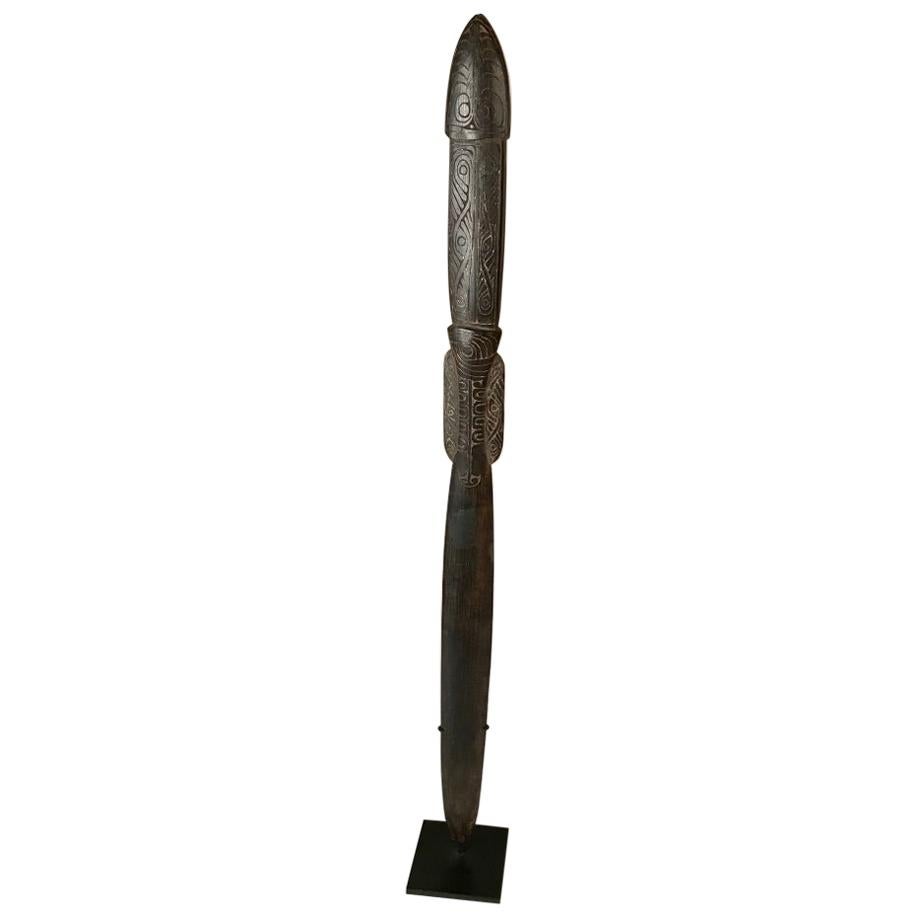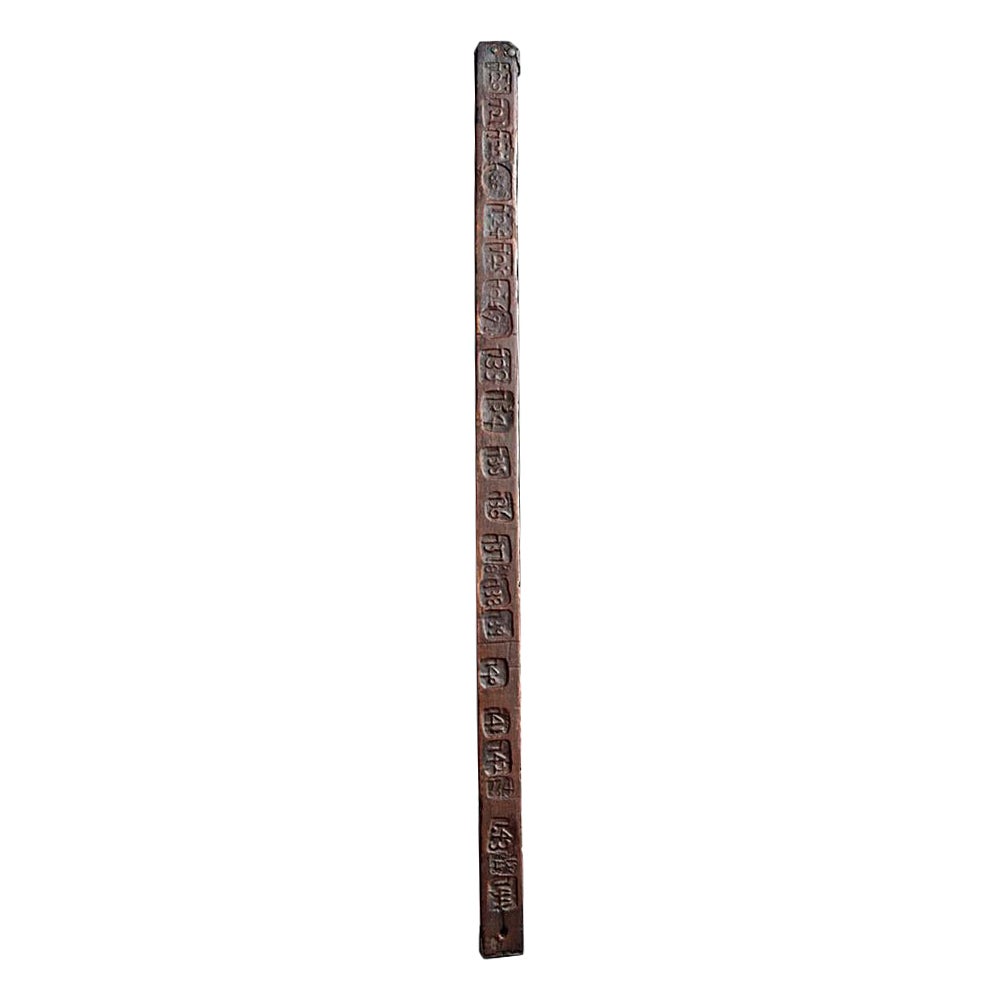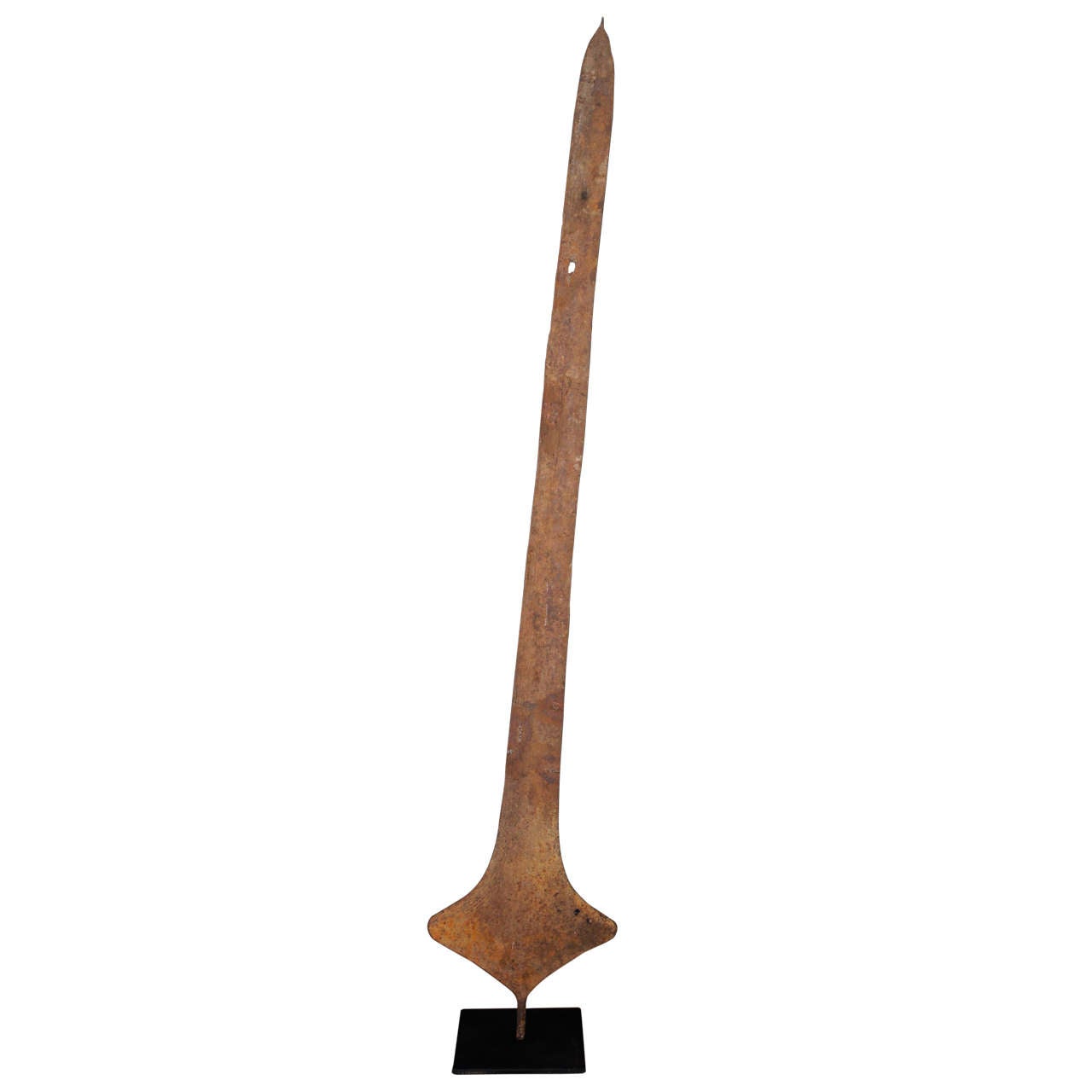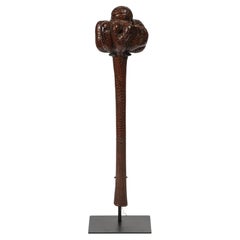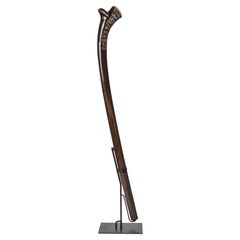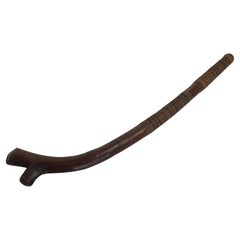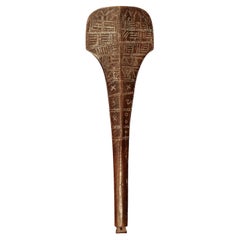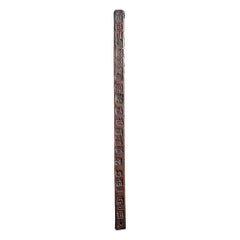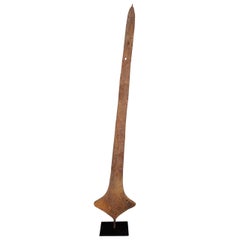Items Similar to Large Brazilian or Guyana Amazon Indigenous Macana War Club, 18th or Earlier
Want more images or videos?
Request additional images or videos from the seller
1 of 21
Large Brazilian or Guyana Amazon Indigenous Macana War Club, 18th or Earlier
$27,992.85
£20,962.11
€23,500
CA$39,013.25
A$42,788.03
CHF 22,377.21
MX$516,996.72
NOK 280,770.27
SEK 264,659.97
DKK 178,900.36
About the Item
A splendid and rare Amazon indigenous wamara wood Macana war-club
Southern-Guyana or Northern Brazil, Wapitxana group of the Aruak peoples, 18th century, possibly earlier
Measure: H. 43 cm
The deep patina of the club present, and the residue on the part where it was held, attest to its great age.
This unusually large Macana is decorated with several incised whitened anthropomorphic and human figures, a decoration only found on one other documented club in the British Museum, which is illustrated in: Hjalmar Stolpe, Amazon Indian designs from Brazilian and Guianan wood carvings, New York, Dover Publ., 1974.
Among the earliest objects to reach Europe in the 17th century from Guyana are ‘four wooden clubs and five hammocks’ that entered the Tradescant collection and are now in the Ashmolean Museum in Oxford.
An early description of these war clubs in Dutch Guyana, based on observations made from the years 1772 to 1777, are stated in the famous book Narrative of a five-year expedition against the revolted N**** of Surinam in Guiana on the Wild Coast of South America from the year 1772 to 1777 by the author Captain John Gabrie¨l Stedman (1744-1797),: “I must not forget that every Indian carries a club, which they call apootoo, for their defence. These clubs are made of the heaviest wood in the forest; they are about eighteen inches long, flat at both ends, and square, but heavier at one end than the other.”
For this book in our collection, see:
Uit Verre Streken, November 2018, no. 9
?Literature:
Hjalmar Stolpe, Amazon Indian designs from Brazilian and Guianan wood carvings, New York, Dover Publ., 1974
We are grateful to our dear friend Mr. Peter van Drumpt for his assistance in writing this catalogue entry.
- Dimensions:Height: 16.54 in (42 cm)Width: 3.94 in (10 cm)Depth: 1.58 in (4 cm)
- Materials and Techniques:
- Place of Origin:
- Period:Early 18th Century
- Date of Manufacture:circa 1700
- Condition:Wear consistent with age and use.
- Seller Location:Amsterdam, NL
- Reference Number:1stDibs: LU5458229624372
About the Seller
5.0
Recognized Seller
These prestigious sellers are industry leaders and represent the highest echelon for item quality and design.
Established in 1985
1stDibs seller since 2020
23 sales on 1stDibs
Typical response time: 7 hours
- ShippingRetrieving quote...Shipping from: Amsterdam, Netherlands
- Return Policy
Authenticity Guarantee
In the unlikely event there’s an issue with an item’s authenticity, contact us within 1 year for a full refund. DetailsMoney-Back Guarantee
If your item is not as described, is damaged in transit, or does not arrive, contact us within 7 days for a full refund. Details24-Hour Cancellation
You have a 24-hour grace period in which to reconsider your purchase, with no questions asked.Vetted Professional Sellers
Our world-class sellers must adhere to strict standards for service and quality, maintaining the integrity of our listings.Price-Match Guarantee
If you find that a seller listed the same item for a lower price elsewhere, we’ll match it.Trusted Global Delivery
Our best-in-class carrier network provides specialized shipping options worldwide, including custom delivery.More From This Seller
View All18th Century Polynesian Hardwood Ula Tavatava or Throwing War Club from Fiji
Located in Amsterdam, NL
A Polynesian hardwood Ula tavatava or throwing war club
Fiji, probably 18th century
All-over decorated in incised pattern, the bulbous top seems to have a stone grown into it.
H. 42 cm
Including museum-quality powder-coated stand.
Provenance:
Private collection, France
Polynesian culture is traditionally a culture of power and prestige, and there was a fine line between battle and ceremony. Warrior people par excellence, the Fijians had at their disposal a large panoply of weapons, each for a specific use.
The elegant Gata are called gun-sticks by Europeans due to the recognizable form. However, they are designed after a snake, gata in Fijian language. The Ula throwing clubs...
Category
Antique 18th Century Fijian Tribal Art
Materials
Hardwood
18th Century Polynesian Ironwood Gata Waka or War Club from Fiji
Located in Amsterdam, NL
A Polynesian ironwood Gata waka or war club
Fiji, probably 18th century or earlier
Measures: Height. 97 cm
Including museum-quality powder-coated stand.
Provenance:
Private collection, France
Polynesian culture is traditionally a culture of power and prestige, and there was a fine line between battle and ceremony. Warrior people par excellence, the Fijians had at their disposal a large panoply of weapons, each for a specific use.
The elegant Gata are called gun-sticks by Europeans due to the recognizable form. However, they are designed after a snake, gata in Fijian language. The Ula throwing clubs...
Category
Antique 18th Century Fijian Tribal Art
Materials
Hardwood
A Polynesian war-club or 'Gata waka'
Located in Amsterdam, NL
Fiji, probably early 20th century
Polynesian culture is traditionally a culture of power and prestige, and there was a fine line between battle and ceremony. Warrior people par exce...
Category
Early 20th Century Fijian Tribal Art
Materials
Hardwood
Fine Jelutong Wood Borneo Dayak Kliau or Shield, First Half of the 19th Century
Located in Amsterdam, NL
A fine Jelutong wood Dayak Kliau or shield
Indonesia, Borneo, Kalimantan, first half of the 19th century
Measures: H. 126 x W. 36 cm
The kliau or klebit is the most popular ...
Category
Antique 19th Century Indonesian Tribal Tribal Art
Materials
Wood
An engraved Sepik cassowary bone dagger
Located in Amsterdam, NL
Papua New Guinea, Sepik Region, Abelam people, early 20th century
Bone daggers in the Sepik region are traditionally crafted from the thigh bone of the ca...
Category
Antique Late 19th Century Papua New Guinean Tribal Art
Materials
Bone
A Nias 'Adu Zatua' wooden ancestor sculpture
Located in Amsterdam, NL
Indonesia, Nias, 19th century
H. 37.5 x W. 10 cm
Sculptures like the one present are not only decorative items but are believed to be vessels that house the spirits of ancestors and are used to communicate with them.
After the death of a person a wooden image or Adu Zatua was made to mediate between the human world and the spiritual realm. These kinds of figures were commissioned by noble Nias families, whereas simple and lesser quality carvings generally were found among lower class families.
In this particularly fine example, the sculptor has paid careful attention to the proportions of the different parts of the body, dividing it into three main sections – the head, the torso, and the legs. The shapes are sometimes flat, round, or have notches, but all are perfectly in balance creating a certain divine tranquillity. This Adua Zatua’s ears are decorated with earrings, and it is wearing a headdress, pointing towards a chiefly provenance.
In 1914 the Dutch gained complete control of the island of Nias and started spreading Protestant Christianity. Many ancestor statues...
Category
Antique 19th Century Indonesian Tribal Art
Materials
Wood
You May Also Like
Late 19th Century War Club, Samoa
Located in Point Richmond, CA
Late 19th Century Fa’alautalinga War Club, Samoa
A short cylindrical handle flares and flattens into a paddle form tapering to an edge, with a raised medial ridge on both sides. Fin...
Category
Antique Late 19th Century Samoan Tribal Abstract Sculptures
Materials
Wood
Oceanic Carved Hardwood Lime Spatula, Papua New Guinea
Located in Stamford, CT
A Papua New Guinea hand carved ebony lime spatula covered with continuous swirl designs etched on the open handle and shaft, with some traces of lime stil...
Category
Mid-20th Century Indonesian Tribal Sculptures and Carvings
Materials
Ebony
Early 19th Century Measuring Stick
Located in London, GB
Early 19th century measuring stick
One of the most unusual and tactile objects we have uncovered for our store. A hand carved early 19th century four...
Category
Antique Early 19th Century Tibetan Folk Art Sculptures and Carvings
Materials
Wood
An Unusually Large 19th Century Topoke Tribe Currency Sword
Located in Hudson, NY
This currency sword, like most African trade currency items, was used as a way to transfer wealth for the purpose of buying land or animals but is most ...
Category
Antique 19th Century Congolese Tribal Collectibles and Curiosities
Materials
Iron
Antique Italian Wooden Club from the Vatican, 18 th Century
Located in Schellebelle, BE
Exceptional wooden club from Italy,The Vatican,18 th Century
Used by the Guardians of The Pope to protect and as a Ceremonial object,
Good, great old patin...
Category
Antique Late 18th Century Italian Sculptures and Carvings
Materials
Fruitwood
Traditional Throwing Knife (Ngalio) Chad Africa
Located in Point Richmond, CA
Throwing Knife (Ngalio)
Sara People, Chad, Africa
Mid-20th century
Material: Iron
Height on custom display stand: 28 in. / 71 cm
Known as "ngalio", thi...
Category
Mid-20th Century Chadian Other Tribal Art
Materials
Iron
More Ways To Browse
Indigenous Furniture
Brazilian Antique Art
War Club
Antique War Club
Antique Hammock
Brazilian Indigenous Art
Indian Clubs
Wood War Club
Antique Indian Club
Dove Carving
Antique Native American War Clubs
Native American War Club
Brazilian Wood Carving
Macana Club
Native American Totem Pole
Native American Artifacts
Brain Tan
Brain Tanned
